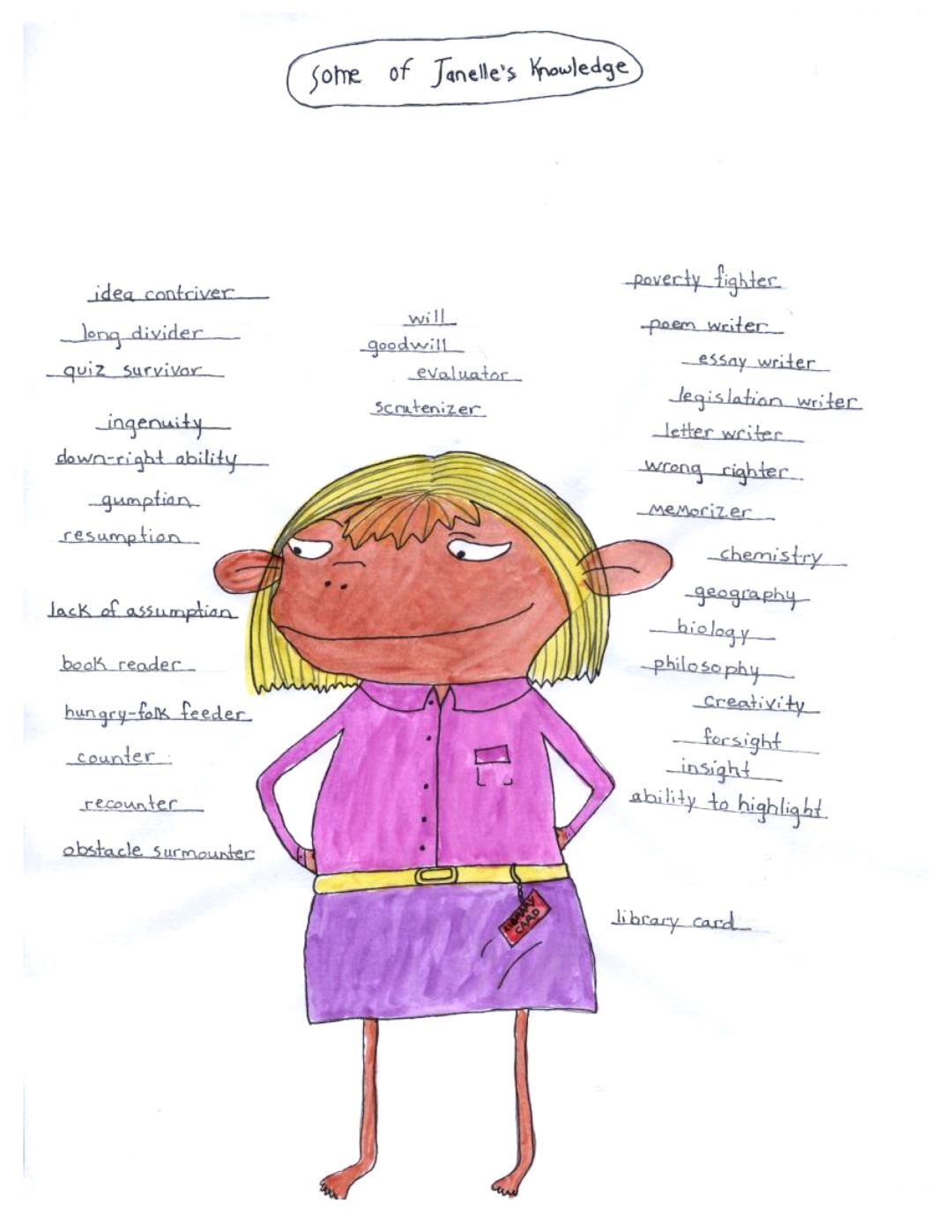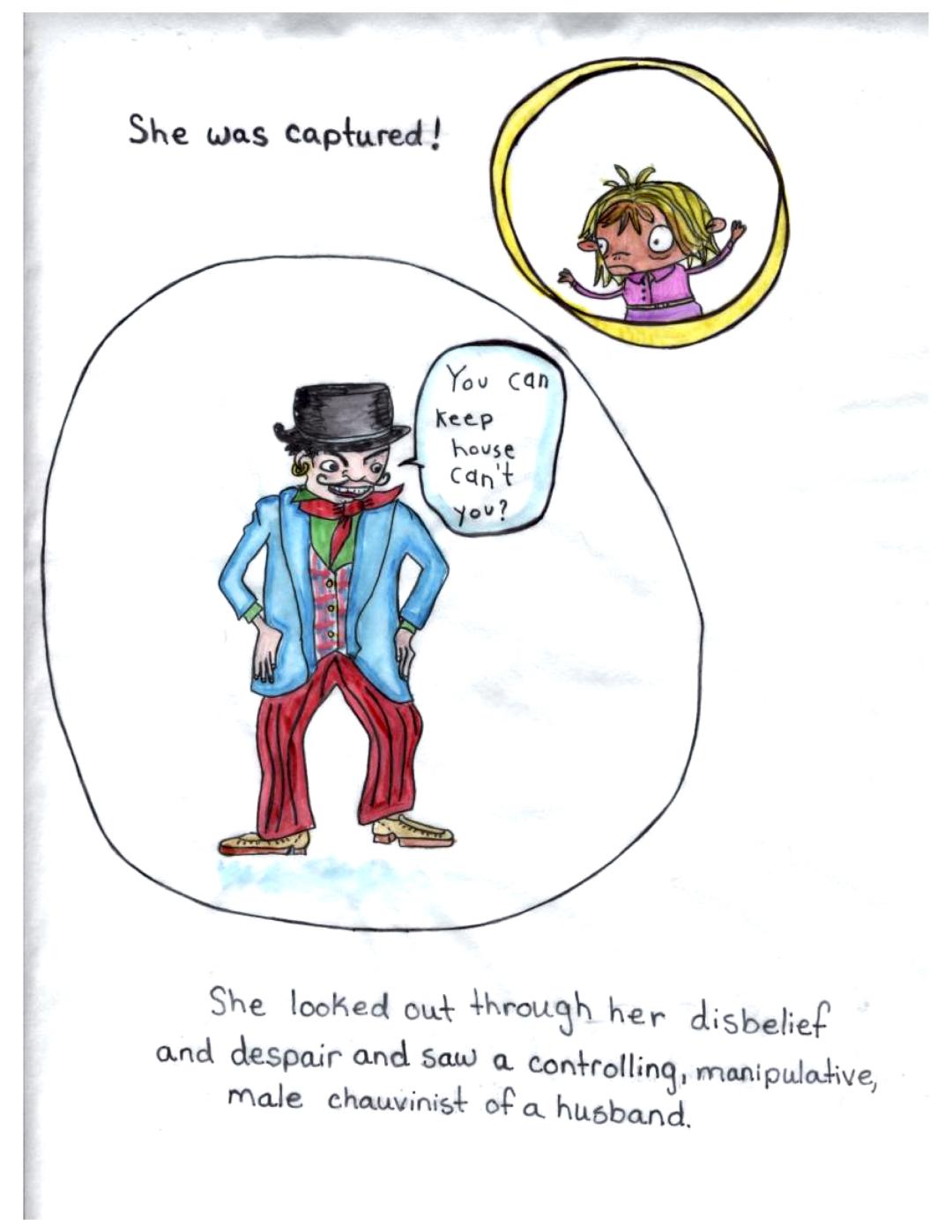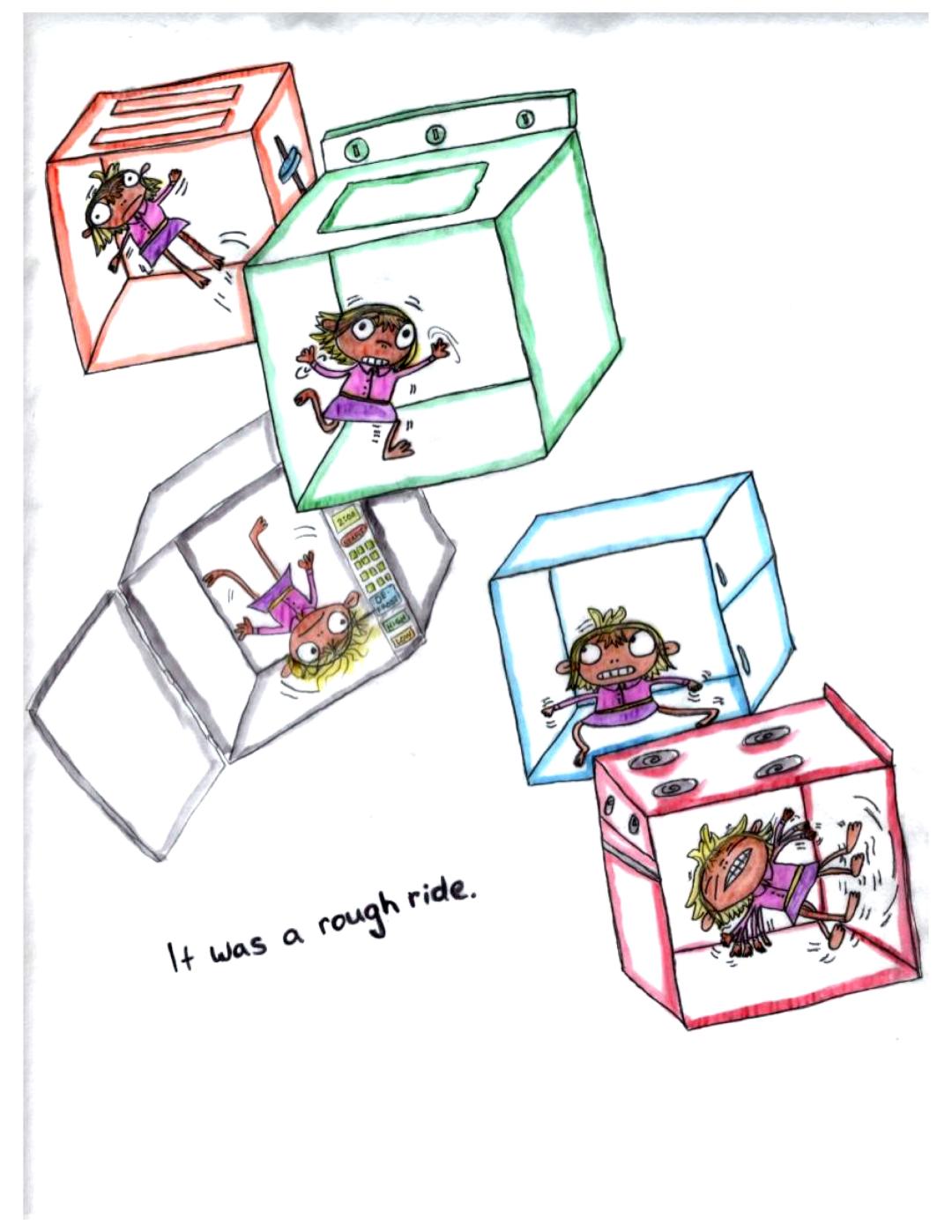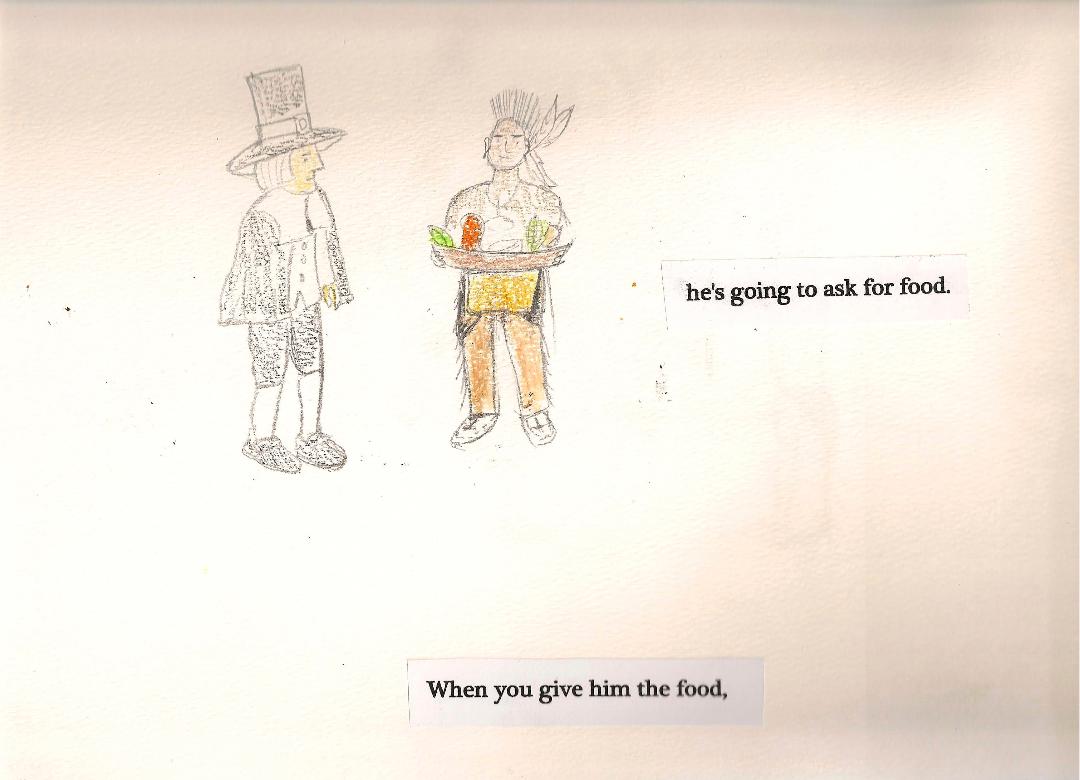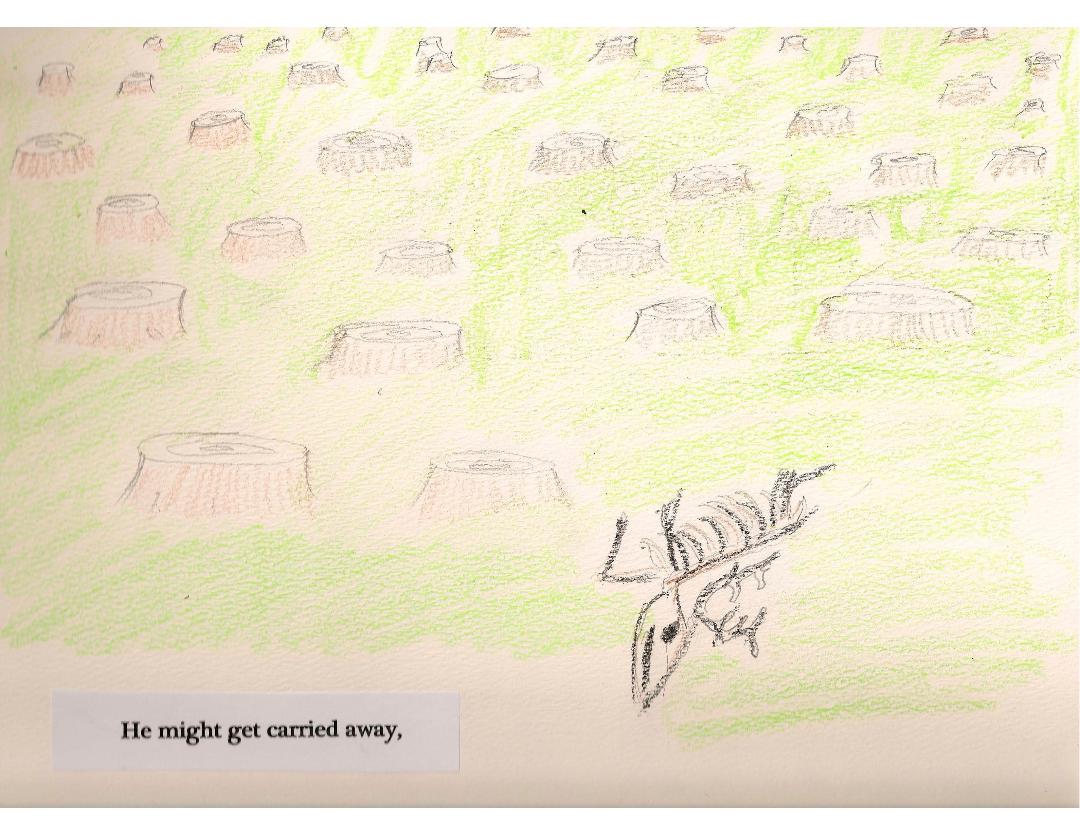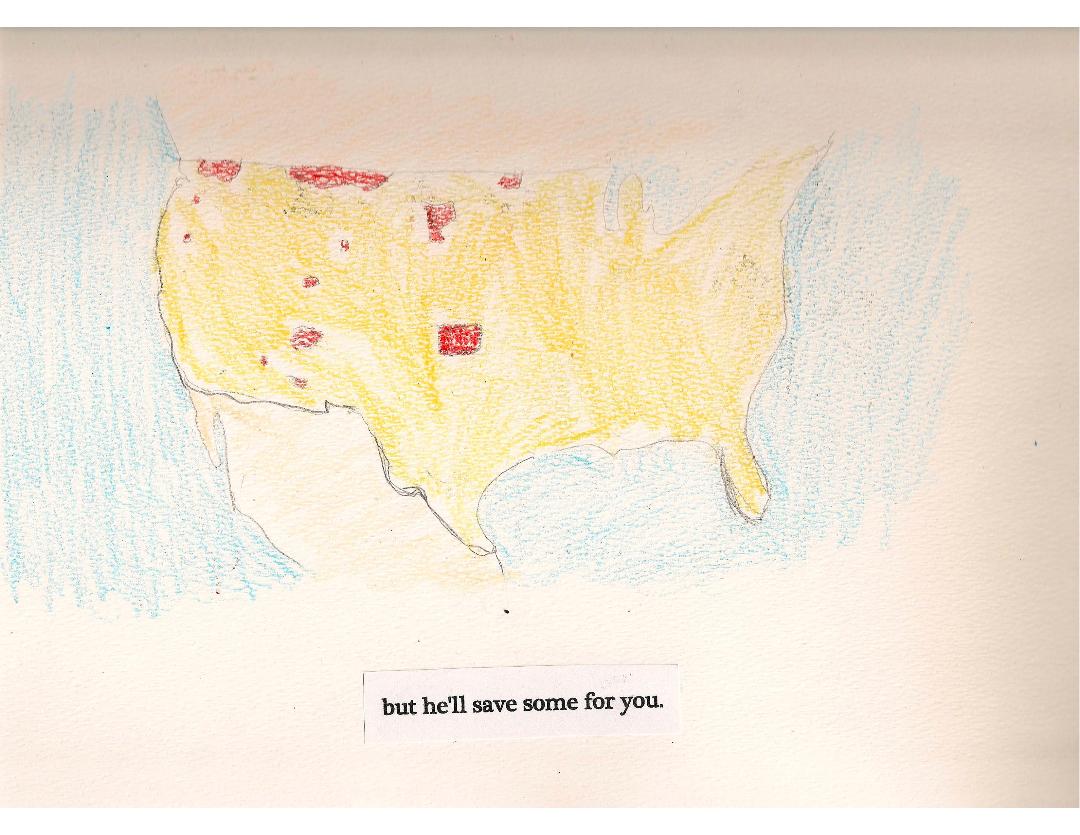Reading and Writing Transactionally and Critically through Alternative Texts
Chuck Jurich
Pre-service teachers can transform from passive readers into active and critical writers who promote social justice by composing “alternative texts,” remixed and critical responses to children’s literature. I first describe an alternative text and then focus on the student-made alternative text Mommy with a PhD as an example of the power and possibility of this emerging genre. Composing alternative texts is an opportunity to transactionally respond to children’s literature and transform any picturebook into a multicultural text. By interrogating multiple viewpoints, examining the social and political issues in texts and using diverse and unconventional literacy practices such as remix, convergence, intertextuality, and multimodal representations, a critical stance to reading, writing, and children’s literature is encouraged.
The Alternative Text Assignment: Aesthetic and Critical Responses to Texts
For many years I have taught undergraduate Children’s Literature courses for pre-service teachers. The alternative text assignment was born out of the goal of helping students read children’s literature from a more transactional and critical perspective. I noticed that students’ initial responses to literature tend to be based around nostalgia (“I remember reading this when I was little”), projection (“Kids will really like this book”), practicality (“I could use this book to teach about life cycles”), and/or qualitative personal preference (“I don’t like the pictures”). The assignment helps students move past these surface level reactions. At its core, the alternative text is a multimodal response to literature that encourages aesthetic responses (Rosenblatt, 1978), where a reader builds and constructs personal meaning, creates connections, and transacts with the mentor text to create new understandings.
Working either solo or in pairs as an “author/illustrator” team, students first pick a picturebook to examine and study closely the “mentor text.” After much deliberation, students then negotiate and work out a plan to construct a transformed version of the mentor text, referred to as the “alternative text.” Students explore making purposeful changes to characters, settings, moods/feelings, intended audience, etc. Throughout the semester they see many examples of student-composed alternative texts and are taught some basics of how visuals make meaning in picture books using Molly Bang’s wonderful text Picture This (2000). When presented in class, the two texts, mentor and alternative text, are shared side by side and the juxtaposition of the two inform one another.
Writing alternative texts is a way of looking at picturebooks from a critical perspective (Lewison, Flint, & Van Sluys, 2002) by “disrupting the commonplace” and paying close attention to details in the mentor text, “interrogating multiple viewpoints” by juxtaposing texts on similar topics or considering multiple interpretations of the same text, and “examining the social and political issues” inherent in all texts. The making of the actual alternative texts is a form of promoting social justice. Over the course of a semester students browse, read, and examine hundreds of picturebooks in a variety of genres and subject areas. Some of these texts overtly address social and political issues such as segregation in The Other Side (Woodson, 2001) or homelessness in Fly Away Home (Bunting, 1991). Some texts demonstrate multiple perspectives, such as Voices in the Park (Browne, 1998), but the vast majority of the picturebooks read by pre-service teachers seemingly have no political or social angle to them. From a critical perspective, however, once the ordinary has been scrutinized, it becomes easier to identify the social, cultural, and political views expressed in all texts.
Remixing Picturebooks
The alternative text assignment sits at the intersection of children’s literature, critical literacy, and remix. Remixing is a writing practice that involves taking cultural artifacts and combining and manipulating them into new kinds of creative blends (Knobel & Lankshear, 2008). Lessig (2008) argues that culture as a whole can be construed as remix. A key component of remixing is intertextuality. While all texts are inherently intertextual, explicitly or implicitly referring to and getting part of their meaning from other texts (Lemke, 1985; Bahktin, 1981), intertextuality is what helps gives the alternative text engagement and substance.
There is a long history of remixing in children’s literature, particularly folktales which have traditionally been passed on orally and transformed in each retelling. Notable examples of remixed folklore include A. J. Jacobs’ Fractured Fairy Tales (1999), featured on the TV show The Adventures of Rocky and Bullwinkle and Friends from 1959-1961, and Roald Dahl’s boundary pushing Revolting Rhymes (1982). Jon Scieszka and Lane Smith have made careers out of remixing fairy tales with books such as The True Story of the 3 Little Pigs (1989) and The Stinky Cheese Man and Other Fairly Stupid Tales (1992). Garner (1997) has taken a modern spin on fairy tales with Politically Correct Bedtime Stories. All of these texts are immensely popular, particularly with adults who arguably might have secretly been the intended audience. These remixes are engaging, using satire, humor and intertextuality in clever ways.
Student composed alternative texts that share these features but (to me, and admittedly I’m biased) their texts are more advanced, remixing from a larger and more diverse pool of mentor texts, moving past fairy tales and clever humor. The alternative texts feel more improvisational; students try out ideas and take risks. The entire text isn’t always consistent but there’s usually a few pages that are spectacularly insightful. The books have heart and are oddly personal, revealing something important about the author, the mentor text, and the world.
Mommy with a PhD and Monkey with a Toolbelt
A good example of an alternative text is Mommy with a PhD, a remix of the mentor text Monkey with a Tool Belt (Monroe, 2007). In the mentor text, the hero is Chico Bon Bon, a resourceful and helpful monkey who is adept with the many tools in his tool belt. A nefarious “organ grinder” sees Chico and sets to capitalize on the monkey’s vast skills. The curious monkey is lured by a banana split sitting on a stool. It turns out to be fake, made of plastic, and he is trapped in a box and re-located to a foreign and mysterious place. Put into domestication as a circus monkey, the fruits of his talents are retained by the organ grinder. However, with his tools and ingenuity, Chico Bon Bon escapes, overcomes his challenges, and returns to happily serve his friends and community.
The author of the alternative text, Janelle (all names used are pseudonyms) was a single mother and at the time just starting to pursue her career in education. She placed herself in the book as the main character, “Janelle Vaughan Vaughan,” a teacher and mommy, but also with a PhD. Comparing the two main characters, both are helpful as well as highly capable, only in different ways. For example, Chico Bon Bon’s skills are blue collar in nature and his tool belt contains: “screwdriver, nut driver, nutcracker, squeegee, ouija, planer, strainer, grease container” and much more. Janelle Vaughan Vaughan, in contrast, has just a library card but her white-collar skills are described as: “poverty fighter, poem writer, essay writer, legislation writer, letter writer, wrong righter, memorizer, chemistry, geography, biology, philosophy, creativity, foresight, insight, ability to highlight” (Figure 1).
The two texts diverge even more with the antagonists. The alternative text makes a connection between the evil organ grinder of the mentor text and “an extremely motivated, intelligent, caring, understanding, supportive single guy” who turns out to be as fake as the plastic banana split. Attracted and tricked by his handsome looks and shiny diamond ring, the Mommy with a Ph.D is trapped and, like Chico Bon Bon, domesticated. The faker turns out to be a “controlling. manipulative, male chauvinist of a husband.” Using the visual mode effectively, the author depicts the Mommy with a PhD encircled in the wedding ring (Figure 2) as well as symbolically trapped in a variety of household appliances: washing machine, cooking range, microwave, and toaster (Figure 3). After battling the despair and depression that accompanies her plight, she makes a plan and escapes by successfully filing for divorce, dividing up the belongings, grabbing the kids, and having the sheriff serve her husband the papers.
Alternative texts such as Mommy with a PhD demonstrate how students transact with mentor texts, addressing important social and political issues that originate from their own lived experiences. Mommy with a PhD was written before the “#MeToo” movement and, while some alternative texts are timely, responding to the headlines in the news, Janelle’s text is a response to her own experiences, shared by many other women. It is impossible to separate Janelle “the pre-service teacher and author” with Janelle Vaughan Vaughan, “the Mommy with a PhD.” The alternative text ends with the hero finding new work in a new town and starting fresh. She tucks her children into bed and goes to sleep herself, alone but content. Janelle’s text was admired and appreciated by the all-female class even though it had an unsettling or even unpopular message: you may not get what you want in life, but with hard work and some ingenuity, you get to redefine and decide what you need, and then pursue it. Pre-service teachers in their early 20’s very much want to find love and get married; the alternative text suggests that there may be a different version of “happily ever after.”
One Mentor Text, Many Alternatives
One mentor text can be remixed in countless ways and the alternative texts often reveal new insights as well as transform how we make sense of the mentor texts. Students have produced many alternative versions of If You Give a Mouse a Cookie (Numeroff, 1985) including If You Give a Girl Lip Gloss, a cause and effect circular story of how a girl learns to become “feminine” one small step at a time from lip gloss, to hair dye, to boyfriends, to wedding rings, to children of her own. Another alternative text, If You Give a Stranger Water, retells the story of the “encounter” between the Indigenous people of North America and the European settlers, leading to the unfortunate aftermath of this first act of kindness. Accompanied by visuals suggesting the first Thanksgiving, the authors write: “If you give a stranger water, he’s going to ask for food.” (Figure 4). Mirroring the playful tone of the mentor text and using images that juxtapose the tone, the authors composed a powerful and haunting alternative version. “When he builds his own home, he’ll start to miss his family, so he’ll need more land. He might get carried away, but he’ll save some for you” (Figure 5 and 6). I honestly can’t look at that little mouse in blue overalls the same way again.
Every Reading is an Opportunity to Create an Alternative Text
The assignment has helped pre-service teachers browse and read books with a transactional and critical lens. We spend approximately 30 minutes of class time each week to browse/read and talk to each other about the books in front of us. I found that because the alternative text was an assignment for university credit, students were more likely to examine texts transactionally and make novel connections while browsing. Every reading was an opportunity to think out a first draft of an alternative text before actually taking on the enormous efforts needed to actually produce one.
For example, students browsed the picturebook Some Monsters are Different (Milgrim, 2013): “Some monsters will eat anything; some are picky. Some monsters talk and talk and talk; some are quiet.” Alexis, a student from Spain, looked confused, “monsters?” Another student explained that some parents call their kids “little monsters” in a loving or playful way. Rereading the book and replacing “monsters” with “kids” made new sense to her. I made the connection that my own parents called me and my brother “banda” in their native Serbo-Croatian which translated to “bandits” or “gang.”
“How can we turn it into an alternative text? What else can be a ‘monster?’” A variety of ideas were thrown around from “women” (hmm, not bad…) to “fruit” (?!?) to “serial killers” (intriguing!). Each idea dramatically transformed the “cute” bedtime story. Weeks later, Alexis decided to follow through with Some Monsters are Different and changed “monsters” to “athletes.” Her book demonstrated the range of bodies and skills that constitute an “athlete” to push back against one idealized form of athlete. Using the mentor text as a guide, each page showed a unique athletic body type including bulky weightlifters, wiry distance runners, older equestrian riders, tiny gymnasts, tall basketball players, and even very “mom-looking” curlers.
Conclusions
While the pre-service teachers in my courses appear to be a homogeneous group, nearly all Caucasian females between the ages of 20-24, I have learned from their alternative texts that they are actually quite different in ways that matter. When students respond aesthetically to picturebooks, we all benefit from these multiple perspectives and diverse connections. Ultimately, alternative texts are transactional critical responses to literature that give readers new insights. They encourage us to re-examine the mentor texts but also re-examine our own understandings of the world. Chico Bon Bon was never just a monkey with a tool belt and Numeroff’s classic was never just about a demanding mouse wanting a cookie. Each remixed alternative text is a unique retelling that reflects the background and sociocultural experiences that the authors bring to the text, promoting social justice in ways that connect to their life experiences.
References
Bakhtin, M. M. (1981). The dialogic imagination. Austin, TX: University of Texas Press.
Bang, M. (2000). Picture this: How pictures work. San Francisco, CA: Chronicle Books.
Janks, H. (2010). Literacy and power. New York: Routledge.
Knobel, M., & Lankshear, C. (2008). Remix: The art and craft of endless hybridization. Journal of Adolescent & Adult Literacy, 52(1), 22–33.
Lemke, J. (1985). Ideology, intertextuality, and the notion of register. In J. Benson & W. S. Greaves (Eds.), Systemic perspectives on discourse: Selected theoretical papers from the 9th International Systemic Workshop, Vol. 1 (pp. 275–294). Norwood, NJ: Ablex.
Lessig, L. (2008). Remix: Making art and commerce thrive in the hybrid economy. New York: Penguin.
Lewison, M., Flint, A. S., & Van Sluys, K. (2002). Taking on critical literacy: The journey of newcomers and novices. Language arts, 79(5), 382-392.
Rosenblatt, L. M. (1978). The reader, the text, the poem: The transactional theory of the literary work. Carbondale, IL: Southern Illinois University Press.
Picturebook References
Browne, A. (1998). Voices in the park. New York: DK Publishing.
Bunting, E. (1991). Fly away home. Illus. R. Himler. New York: Clarion.
Dahl, R. (1982). Revolting rhymes. Illus. Q. Blake. London: Jonathan Cape.
Garner, J. F. (1994). Politically correct bedtime stories. London: Souvenir Press.
Jacobs, A. J. (1999). Fractured fairy tales. New York: Bantam Trade.
Milgrim, D. (2013). Some monsters are different. New York: Henry Holt.
Monroe, C. (2007). Monkey with a tool belt. New York: Carolrhoda.
Numeroff, L. (1985). If you give a mouse a cookie. Illus. F. Bond. New York: Harper and Row.
Scieszka, J. (1989). The true story of the 3 little pigs. Illus. L Smith. New York: Viking.
Scieszka, J. (1992). The stinky cheese man and other fairly stupid tales. Illus. L. Smith. New York: Viking.
Woodson, J. (2001). The other side. Illus. E. B. Lewis. New York: Putnam.
Chuck Jurich is an Assistant Professor of Literacy Education at the University of North Carolina, Wilmington
WOW Stories, Volume VI, Issue 2 by Worlds of Words is licensed under a Creative Commons Attribution-NonCommercial-ShareAlike 4.0 International License.
Based on a work at https://wowlit.org/on-line-publications/stories/wow-stories-volume-vi-issue-2/

